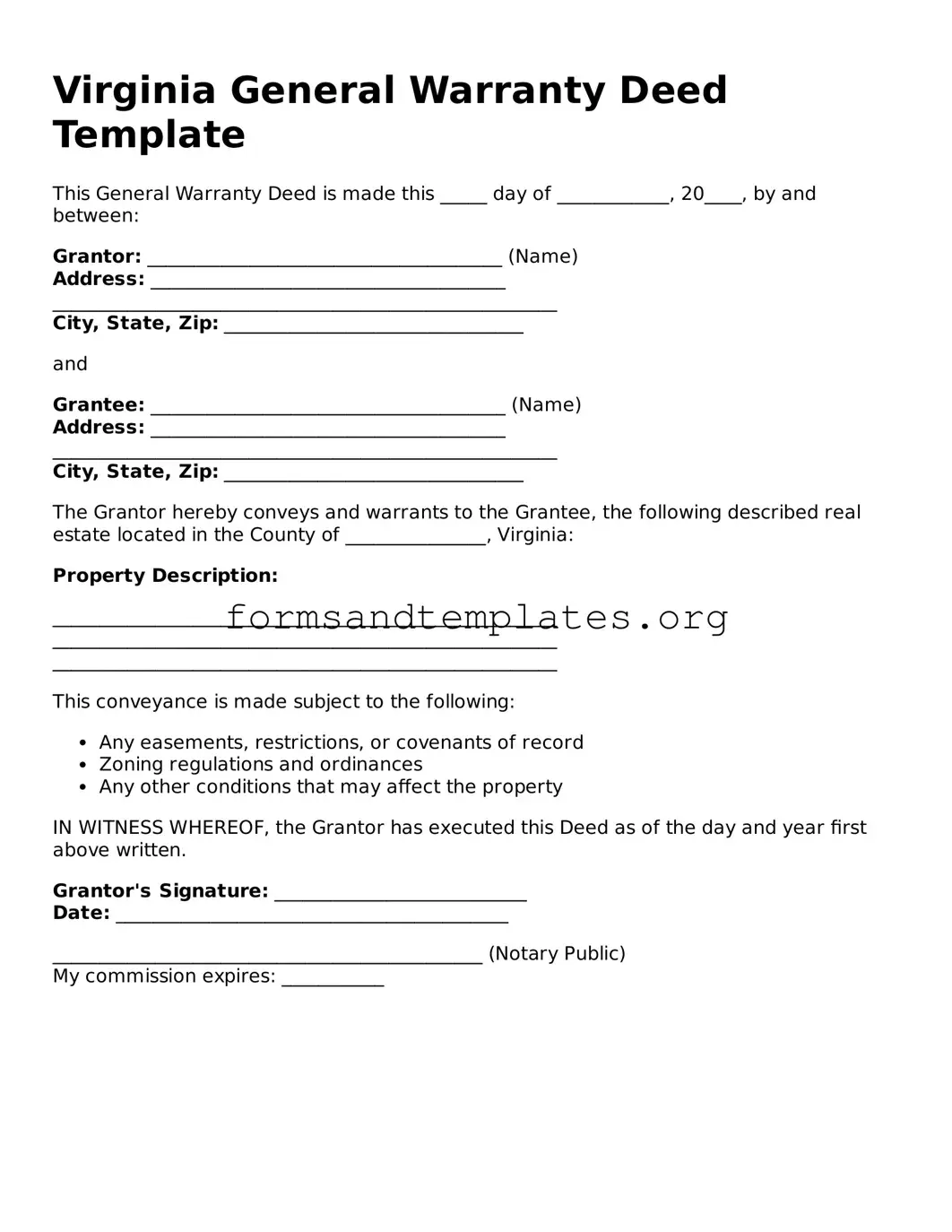Virginia General Warranty Deed Template
This General Warranty Deed is made this _____ day of ____________, 20____, by and between:
Grantor: ______________________________________ (Name)
Address: ______________________________________
______________________________________________________
City, State, Zip: ________________________________
and
Grantee: ______________________________________ (Name)
Address: ______________________________________
______________________________________________________
City, State, Zip: ________________________________
The Grantor hereby conveys and warrants to the Grantee, the following described real estate located in the County of _______________, Virginia:
Property Description:
______________________________________________________
______________________________________________________
______________________________________________________
This conveyance is made subject to the following:
- Any easements, restrictions, or covenants of record
- Zoning regulations and ordinances
- Any other conditions that may affect the property
IN WITNESS WHEREOF, the Grantor has executed this Deed as of the day and year first above written.
Grantor's Signature: ___________________________
Date: __________________________________________
______________________________________________ (Notary Public)
My commission expires: ___________
